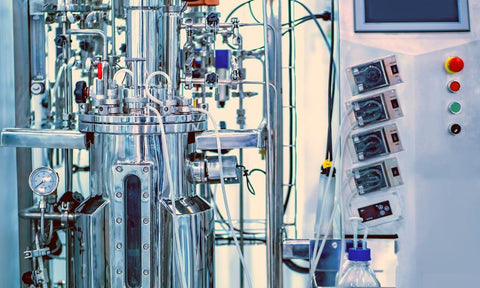
Understanding Filter Pore Sizes: Matching the Right Filter to the Right Application
In today’s advanced biopharmaceutical manufacturing and sterile compounding environments, product integrity, patient safety, and regulatory compliance depend heavily on effective filtration. Whether it’s ensuring the sterility of a complex biological drug product or maintaining the purity of a life-saving injectable, controlling contamination at the microbial level is paramount. This is why the selection of the correct filter pore size is so critical—particularly in industries where absolute sterility and consistent purity are non-negotiable.
Understanding how pore size correlates with application needs, validating sterilizing-grade filters, and selecting the right membrane or media can make all the difference in achieving both compliance and efficiency.
If you remain uncertain about which filter pore size or material best suits your needs, you can begin by trying our Filter Selection Guide, which helps match application requirements to the optimal filter solution.
Why Does Pore Size Matter?
The effectiveness of a filter in removing contaminants directly correlates with its pore size, which is typically measured in micrometers (µm). Here’s why choosing the correct pore size is crucial:
- Sterility Assurance: Absolute 0.2µm pore filters are the standard for sterilizing applications, required to effectively retain Brevundimonas diminuta (ATCC #19146) at a challenge level of 10^7 CFU per cm², per ASTM F838-05 standards, ensuring reliable bacterial removal and product sterility.
- Quality Control: Filters with appropriate pore sizes help maintain the consistency and purity of the final product, which is critical in high-stakes industries like pharmaceuticals.
- Regulatory Compliance: Using the correct pore size is essential to meet health regulations, failing which can lead to severe consequences, including product recalls and legal issues.
Choosing the Right Pore Size for Your Application
When selecting a filter, consider the following aspects:
- Sterilizing-Grade Filtration: Absolute 0.2µm pore filters are essential for applications requiring sterile conditions, ensuring the removal of all bacteria and meeting industry standards for sterility.
- Pre-Filtration and Clarification: Larger pore sizes such as 0.45µm or higher are suitable for removing larger particulates, extending the life of downstream finer filters, and reducing overall filtration costs.
Absolute 0.2µm Pore Filters: In biopharmaceutical and sterile compounding settings, absolute 0.2µm pore filters are crucial. While 0.22µm filters are commonly mentioned, the slight difference of 0.02µm can be significant. For example, Brevundimonas diminuta, a benchmark organism used in validation studies, may pass through a 0.22µm filter but is reliably retained by an absolute 0.2µm filter. This distinction is critical for ensuring that products meet the "sterile" criteria under recognized guidelines.
Balancing Efficiency and Safety
While absolute sterility is critical in pharmaceutical settings, process efficiency and cost-effectiveness cannot be overlooked. Overly restrictive filters may increase operational expenses, while coarse filters risk contamination. Striking the right balance involves:
- Pilot testing.
- Consulting with filtration experts.
Using advanced materials like Saint-Gobain PureFlo's Highly Asymmetric Dual-Layer Membrane and IFP's Multilayer Media Cartridges with built-in pre-filters enhances filtration performance by effectively removing larger particles upstream, protecting the final filtration layer. These technologies outperform traditional media by 20%-30%, providing superior particle retention, higher throughput, and improved overall efficiency.
Ensuring Compatibility
Once the correct pore size is determined, it’s essential to ensure chemical compatibility with filtration materials. Use the following resources for guidance:
Unique Applications and Features of Filtration Materials
Polyethersulfone (PES):
- Available Micron Ratings: 0.1µm, 0.2µm, 0.45µm, 0.65µm, 0.8µm, 1.2µm
- Material Features: Pharmaceutical Grade, Hydrophilic, Low Protein Binding, High Flow Rate
- Unique Applications: PES is ideal for aqueous solutions and sensitive biological compounds, excelling in sterile filtration for injectables, culture media, vaccines, buffers, biologics, antibiotics, fine chemicals, ultrapure water, and large-volume parenterals, where low protein binding and high flow rates are critical.
Polytetrafluoroethylene (PTFE):
- Available Micron Ratings: 0.1µm, 0.2µm, 0.45µm, 1.0µm, 3.0µm, 5.0µm, 10µm
- Material Features: Pharmaceutical Grade, Hydrophobic, Chemically Inert, High-Temperature Resistance
- Unique Applications: PTFE is highly valued for its chemical inertness and hydrophobic properties, making it well-suited for filtering oils, aggressive chemicals, ketones, organic solvents, gases, and non-aqueous solutions. Common applications include air and gas filtration such as bioreactor vents and tank venting.
Polypropylene (PP):
- Available Micron Ratings: 0.1µm, 0.2µm, 0.45µm, 0.65µm, 0.8µm, 1.0µm, 3.0µm, 5.0µm, 10µm
- Material Features: Biological & Food Grade, High Chemical Resistance, Economical
-
Differentiation from Membrane Filters:
Polypropylene (PP) is a fibrous media designed for standalone pre-filtration. Unlike membranes, which provide absolute ratings and are designed to completely eliminate bacteria, PP reduces bacterial load and removes particles but does not achieve sterilizing-grade filtration. It is unsuitable for final sterilizing applications where absolute bacteria elimination is required. - Unique Applications: PP is a versatile and economical choice for pre-filtration and bulk processes, widely used in food and beverage production, water treatment, and chemical handling, including beverage production, fermentation broths, edible oils, sweeteners, proteins, brewing, wine production, and water purification. IFP's Multilayer Media Cartridges feature a proprietary configuration with three or more layers, which can be customized to suit specific particle distributions. This design makes them exceptionally efficient as pre-filters, enhancing overall filtration performance by targeting varying particle sizes effectively.
Conclusion
The selection of the right pore size and filter material is critical in maintaining product quality, ensuring regulatory compliance, and achieving cost efficiency in biopharmaceutical manufacturing and sterile compounding. Understanding the unique properties and applications of PES, PTFE, and PP will aid in choosing the most appropriate filter for your specific needs.
For further guidance on navigating these choices, refer to our Filter Selection Guide or consult with our experts to ensure your filtration process is optimally configured to meet the highest standards of your industry.


